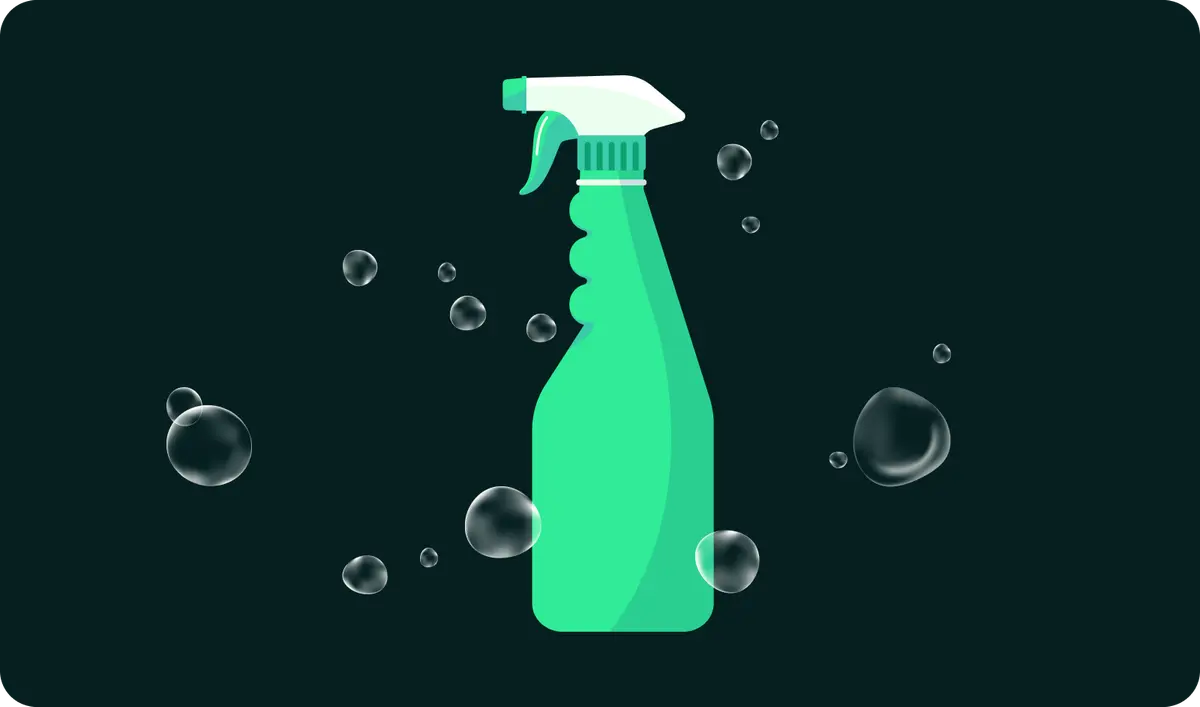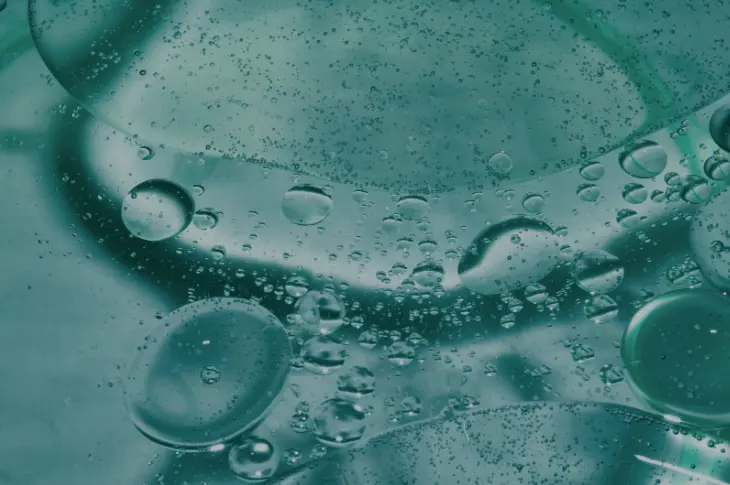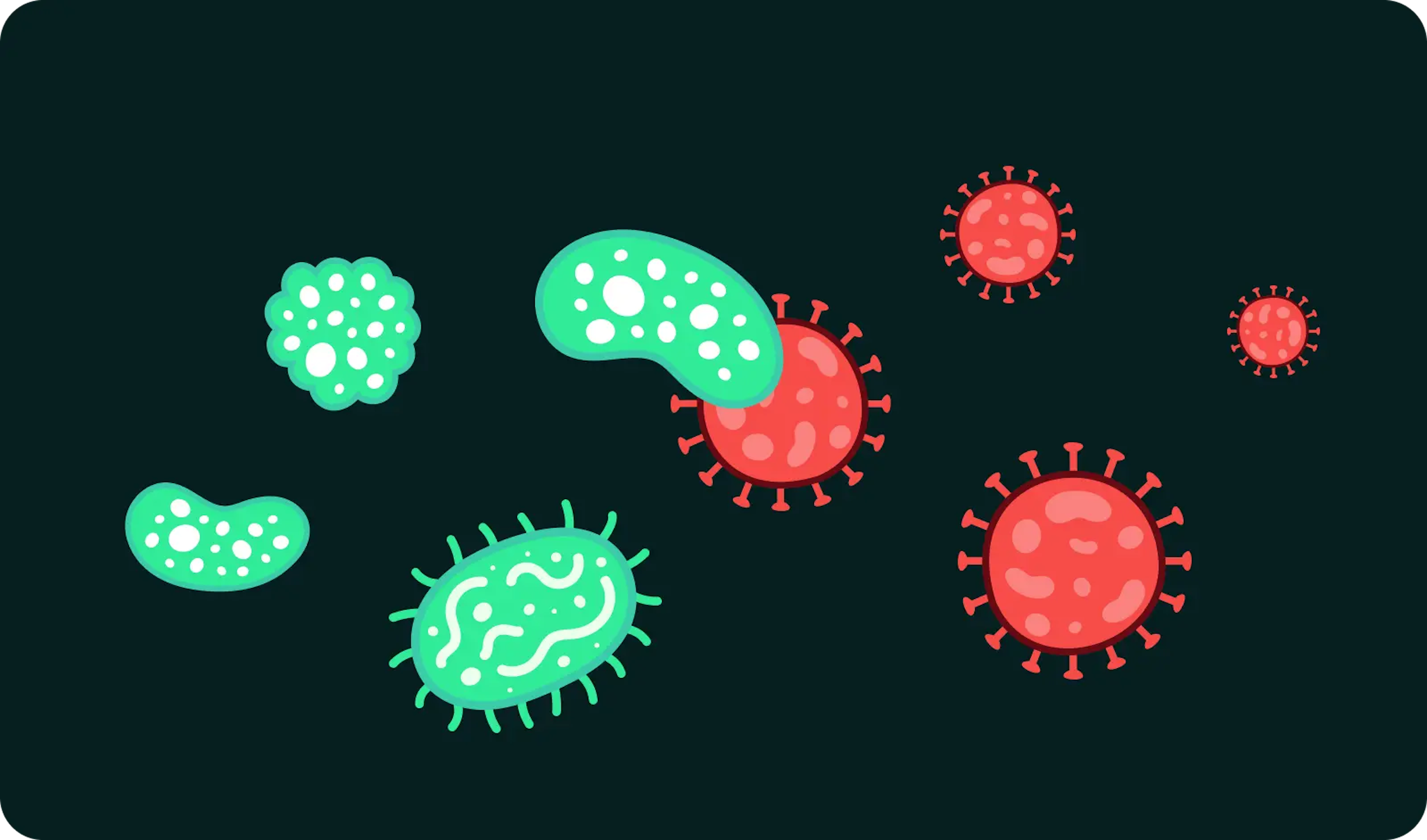How can I help?
Cleaning Guide: What are plant-based surfactants?
Learn more about plant-based surfactants and why they are integral to the cleaning industry!

To say surfactants are at the heart of the cleaning industry would be an understatement. Surfactants are key ingredients in detergents, emulsions, foams and microbial products. Unfortunately, as crucial as surfactants are to our most-used formulations, synthetic forms have environmental implications we must consider.
As consumers become increasingly aware of the environmental impact of their products, the demand for sustainable cleaning brands is higher than ever before. Derived from renewable and non-renewable resources, surfactant production methods vary wildly. Choosing brands with plant-based surfactants produced sustainably allows companies to decarbonise and reduce environmental impact.
This guide delves into the $40 billion surfactant industry, its environmental implications for synthetic and plant-based surfactants, and the latest innovations. With the right insights, you can become an environmentally-minded business and meet your clients’ ESG goals
What are surfactants?
Before getting into plant-based surfactants, we must dive into molecular science to understand why surfactants are so integral to the cleaning industry. Already up to speed with surfactant basics?
Surfactants are ‘surface-active’ agents that lower the surface tension of liquids, gases and solids. Surface tension makes water retain its shape on surfaces (the droplet you see on the table) and prevents it from penetrating.
Surfactants are amphiphilic molecules with a hydrophobic (water-repelling) tail and a hydrophilic (water-loving) head. With the water-loving head surrounding the water and the water-hating tail pulling ‘outside’, the molecule breaks the water surface, making it soak into materials.
At the same time, the molecules group together, creating a sealed micelle, which lifts the dirt off the surface. This process is how surfactants ‘clean’ – and why they’re critical ingredients in cleaning products.

Different types of surfactant molecules
There are different surfactant molecules, including anionic, nonionic, cationic or amphoteric. These have negative, positive or neutral electrical charges changing how they behave in the cleaning process.
Anionic surfactants:
These carry a negative electrical charge. Common in soaps and detergents, they are excellent at lifting and suspending a variety of dirt, making them a staple in household cleaning products.
Nonionic surfactants:
Neutral in charge, these surfactants excel at emulsifying oils. They have a unique feature known as the 'cloud point' – a specific temperature at which they separate from the solution, achieving optimal detergency.
Cationic surfactants:
Positively charged surfactants are often found in fabric softeners and certain antimicrobial cleaning agents too. These surfactants cannot be mixed with anionic surfactants as the opposite charges will neutralise each other, rendering both ineffective.
Amphoteric surfactants:
These can carry both positive and negative charges, changing based on the solution they are in. Their versatility makes them suitable for a wide range of applications.
Traditional (synthetic) vs. plant-based surfactants
Synthetic or petrochemical surfactants are produced through oil, gas and chemical processing. Plant-based or bio-based surfactants are derived from oil-rich plant materials, including coconuts, palm, corn and soy. Although these surfactants are from renewable sources, they may also undergo chemical processing.
As the cleaning industry prioritises sustainability, surfactants have gone under the microscope for their impact on ecosystems, water quality, and the overall sustainability of the products in which they are used. Cleaning brands have had to get up to speed and improve the supply chains of their ingredients.

Here is a snapshot of the synthetic surfactants and plant-based ones:
Synthetic or petrochemical surfactants:
Advantage:
- Easily manipulated to increase performance and versatility
- Cost-effective to produce
- Readily available
Disadvantage:
- Non-renewable
- Energy-intensive, contributing to carbon emissions
- Toxic chemicals that can be unsafe
- Don’t break down in soil and water, harming ecosystems
Plant-based surfactants:
Advantage:
- Derived from renewable resources, reducing greenhouse gas emissions
- Break down more easily, minimising their ecological impact
- Lower toxicity, making them safer to use
Disadvantages:
- Land clearing needed for plant growth can lead to reforestation
- Can be less effective, which means more product is needed to be effective
Tips for choosing environmentally responsible cleaning products
‘Cleaning up’ the cleaning industry isn’t as simple as swapping synthetic ingredients for plant-based ones. Factors that affect the sustainability of surfactants are complex, and we must consider every point in the value chain.
Key environmental factors of surfactants
- Biodegradability: Non-biodegradable surfactants can accumulate in the environment, leading to long-term pollution.
- Toxicity: Surfactants can be toxic to aquatic organisms, affecting their survival, growth, and reproduction.
- Carbon emissions: Petrochemicals contribute to carbon emissions and are non-renewable.
- Deforestation: Plant cultivation can lead to deforestation, habitat destruction, and biodiversity loss.
- Energy consumption: Producing surfactants, especially those derived from petrochemicals, can be energy-intensive.
- Hazardous waste products: The chemical processes in the manufacturing of surfactants can produce by-products and waste materials that may be hazardous.
Eden
So knowing the factors above, how do approach commercial cleaning in your company? Here are our tips:
Choose plant-based cleaning products
Plant-based cleaning products utilise less water, land and energy, generating lower carbon emissions. Prioritising plant-derived ingredients means the products are biodegradable, minimising the toxins released into nature.
Opt for high concentration to reduce waste
High concentration ensures that smaller quantities are needed to effectively clean, minimising chemical use and packaging waste. Lower product consumption also translates into cost savings over time.
Leverage biotechnology for high-performance
Leveraging scientific research to develop innovative products that combine plant-based surfactants and other effective natural ingredients, such as enzymes and microbes, offering high-performing chemical-free cleaning alternatives.
Opt for brands with environmental certifications
Certifications such as GECA validate the sustainability of products, reinforcing a brand’s commitment to transparency and environmental stewardship and giving you peace of mind.
Choose products that mitigate carbon emissions
Educate yourself on carbon emissions associated with the entire lifecycle of a product, from production to disposal.
Enviroplus has partnered with microbiologists and chemists to create cleaning products with plant-based surfactants derived from renewable sources. These products are also biodegradable, breaking down in water and soil, reducing the impact your cleaning has on human health and on the environment.

Enviroplus plant-based products:
Benefits of plant-based surfactants:
- Derived from renewable resources
- Lowers energy consumption
- Reduce CO2 emissions
- Biodegradable
- Better for specific functions
- Lower toxicity
By choosing greener cleaning products with plant-based ingredients, you’re helping to shape a more sustainable future.
Join the movement of smart businesses making a clean change.


